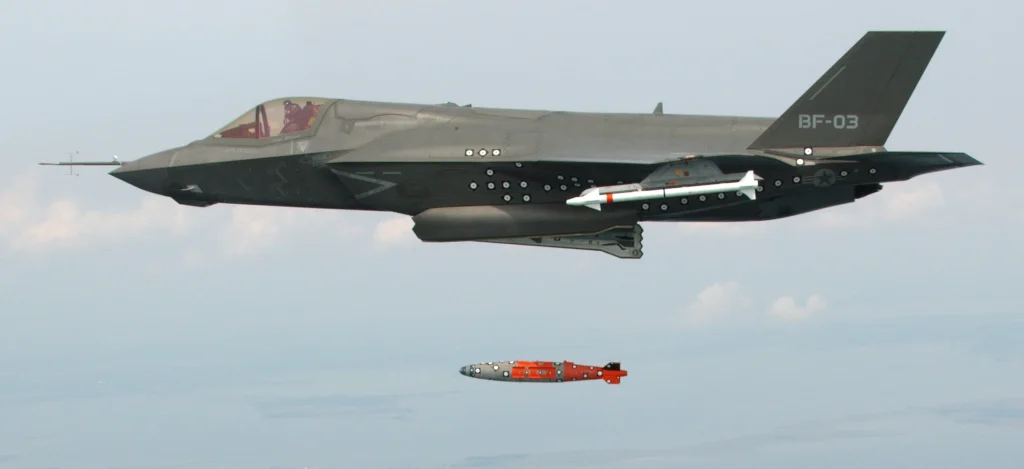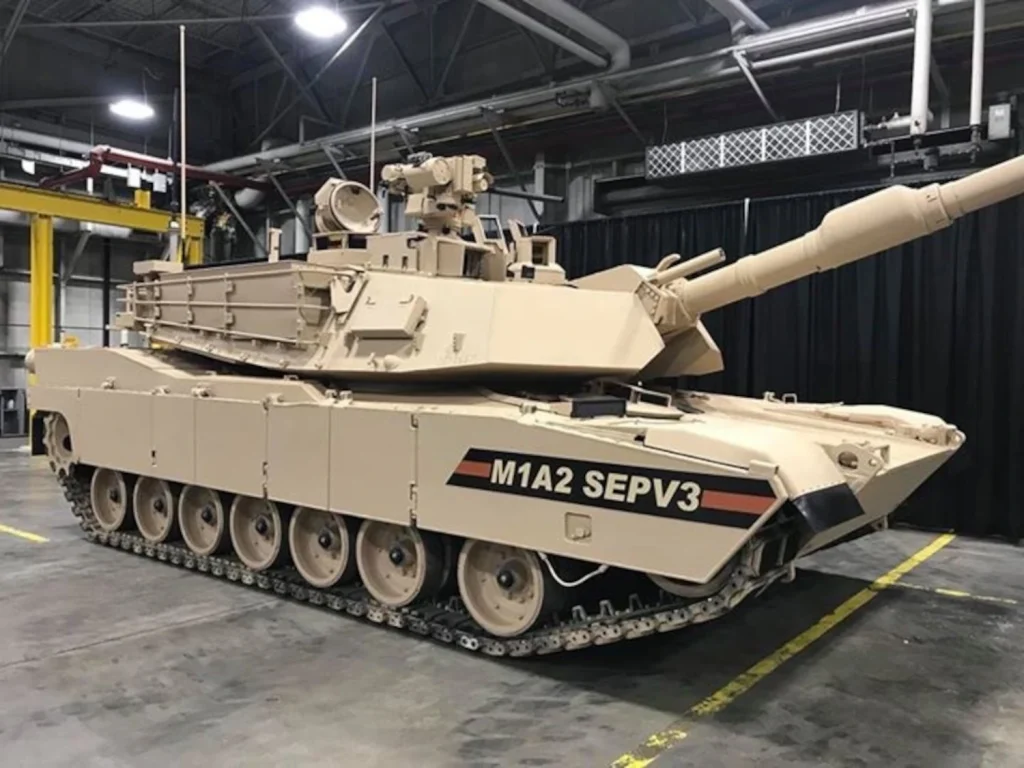The Polish Ministry of Defense has been accused of overstating the amount of the contract to purchase American F-35 fighters and the shortage of pilots, putting an end to the ambitious plans to modernize the Polish Air Force. A similar situation arose with the American Abrams tanks ordered by Poland.
A warning that was not heard
Currently, the Polish Air Force has 27 MiG-29s, 18 Su-22s and 48 American F-16s, which are ageing. Poland signed an agreement early last year to purchase 32 fifth-generation Lockheed Martin F-35 Lightning II fighter-bombers. The contract value was $ 4.6 billion. In addition to the supply of the fighters, each of which cost Poland $ 87 million, this amount includes an additional engine for each aircraft, pilot training, the supply of flight simulators, and logistics services.
The training for pilots to operate the new technology was to be in the United States. A total of 24 pilots were to be trained, including up to instructor level and 90 technical personnel. Poland was to receive the first F-35 in 2026; the rate of deliveries will be 4-6 aircraft per year. By 2028, the first squadron should reach initial combat readiness, and in 2030 the last of 32 fighters will be delivered to Poland.
When the US Congress approved the sale of these aircraft to Poland in September 2019, the preliminary cost of the order was announced at $ 6.5 billion. But Warsaw managed to bring down the price during negotiations. Polish Defense Minister Mariusz Blaszczak said that acquiring fifth-generation fighters will strengthen the country’s air force capabilities and completely get rid of “worn out Soviet aircraft that have no combat value.”
However, a scandal broke out following the leak of secret correspondence between Michal Dvorczyk, who heads the office of Polish Prime Minister Mateusz Morawiecki. Warsaw has blamed Russian hackers for the leak. A report was prepared in March 2019 for the head of the government by an expert of the Ministry of Defense which became public. The expert warned the prime minister that “the acquisition of the F-35 in a hurry, as part of an urgent operational need, may be associated with too high costs.” He also reported a “fundamental shortage” in the Polish Air Force of personnel capable of mastering such a machine, which is why the “potentially unique properties of the aircraft” will not be fully exploited.
A former head of the Polish Air Force, Tomasz Drewniak spoke about the note to a Polish news outlet: “If I, as a decision-maker, received such a document, I would deeply think about the legitimacy of signing a contract for the purchase of the F-35.”
Units of the Polish Air Force, equipped with outdated Soviet equipment, have little combat value. At the same time, Polish experts drew attention to the lack of proper training among Polish pilots who are to be retrained on the F-35. Basic pilot training for the F-35 is only available in the United States. But due to the enormous training needs of the pilots of the armed forces of the United States and other allied countries, it is assumed that the training of pilots from Poland can begin no earlier than 2025.
Dubious machine
Despite these warnings, the Polish government still signed a contract for the purchase of fighters. The choice made in favour of the F-35 was without a tender or lengthy preliminary negotiations. However, the value of an expensive purchase turns out to be highly questionable. Thus, critics of the F-35 program point out that the “light and inexpensive fighter” has become increasingly heavy and expensive over two decades of development. This happened because both the customer, the Air Force, and the leading contractor, Lockheed Martin, “weighed” it with more and more new technologies. With a price tag in the region of $ 100 million, the F-35 proved to be overpriced.
At the same time, it also needs constant expensive maintenance and is recognized by American military experts as unreliable. Former US Air Force program manager Dan Ward believes the F-35 is not a cheap, lightweight fighter. And Air Force Commander General Charles Brown Jr. compared the F-35 to a Ferrari. And he added: “You don’t drive your Ferrari to work every day; you only drive it on Sundays. This is our high-end fighter, and we want to make sure we don’t have to use it in all low-level conflicts.”

As per Brown, the Americans need a new “simpler” fighter to take on the burden of day-to-day operations. “Today, this role is played by about a thousand F-16s at the disposal of the Air Force. But we haven’t bought any new F-16s from Lockheed since 2001. All F-16s are too old,” the general complained. Meanwhile, there is no adequate replacement. “They tried to get the F-35 to do too much,” says Dan Grazier, an analyst with Project on Government Oversight in Washington. He says: complexity increases cost – increases in cost cause delays – delays give developers time to complicate the design further – this adds value again – causing more delays. Etc.
As per the leaked correspondence, Polish Prime Minister Mateusz Morawiecki, after reading the experts’ reports, had serious doubts if it was worth buying the F-35. He hesitated almost until the very last minute. However, his adviser Mariusz Chlopik tried to dispel the suspicions of the head of government. He told the prime minister that he would look beautiful in the photographs taken at the time of the signing of the contract, and thanks to them, the Poles for many years will remember who exactly provided their forces with such valuable “toys” as the F-35.
The Polish expert’s report says: “It should be emphasized that the cost of acquiring the F-35 can only represent 20% of the total costs in the product life cycle.” F-35 aircraft will have to prepare expensive infrastructure – new bases, runways, hangars, etc. But that’s not all. The F-35 is equipped with artificial intelligence to create a single image of the battlefield and transmit it to command posts in real-time. However, the Polish Armed Forces, lagging in their technological development, do not have modern communication and information processing centres to interact with the F-35 systems. They will have to be created from scratch – and this is a considerable cost. Without the corresponding technological leap, the F-35 (an hour of flight of such a fighter costs $ 44 thousand) will remain expensive but useless toys.
Does Poland need American Abrams?
A very similar situation arose in connection with the decision announced by the Polish Minister of Defense Mariusz Blaszczak in July this year to buy 250 American Abrams M1A2 tanks (the latest SEPv3 modification) for $ 6 billion. Poland still deploys Soviet-made vehicles. According to Polish experts, it would be more logical to purchase European-made vehicles, which are much easier to integrate into the overall EU defense system. Moreover, the Polish army already has German Leopard-2A4 tanks.

The talks about the purchase of “Abrams” have been going on for quite a long time, but the decision of the Ministry of Defense in this regard came as a surprise. Polish experts are worried that their country may be left out of the program to develop new pan-European tanks, led by Germany and France. Experts think it would be more logical to expand purchases of German Leopards and their modernization – which would bring Poland closer to its EU partners. American technology directly leads to problems associated with training crews, the logistics of delivering spare parts, and the maintenance of equipment – and they will have to be dealt with for decades. And all this instead of developing Poland’s indigenous tank building programs.
Polish experts have fiercely criticized the Ministry of Defense for its ill-conceived strategy. From a military point of view, there is no immediate threat of an armed attack on Poland. Polish experts view the purchase as political as the current ruling coalition wants to show that it will improve and deepen relations with the Americans.
Some military analysts from Poland point out that the “Americans” use fuel different from Polish armoured vehicles. There are also questions about the repair of other models of tanks. Much depends on what steps will be taken after the decision to buy “Abrams”. For example, they will create the potential at Polish enterprises to successfully operate and maintain such equipment on the go.
